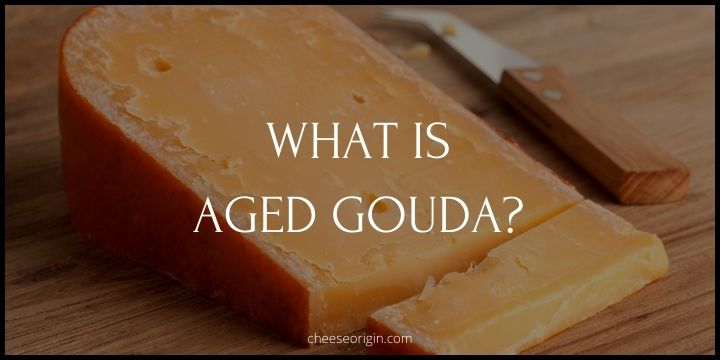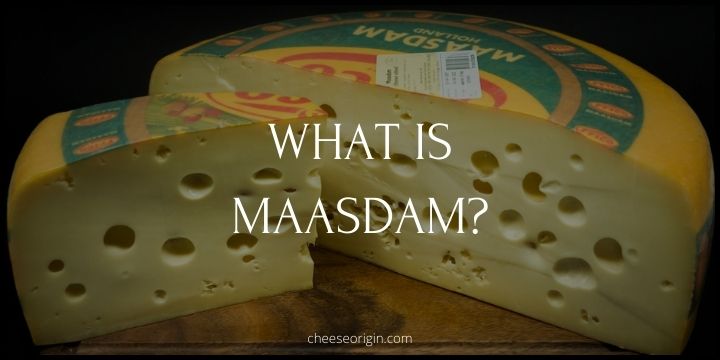What is Bocconcini? The Soft, Spongy Italian Delight
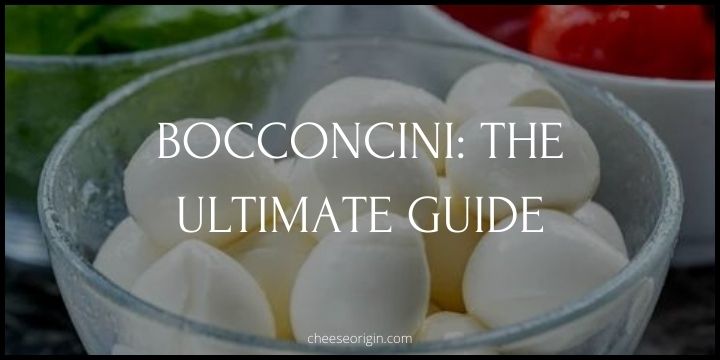
Bocconcini, the bite-sized treasure of Italian cuisine, has been winning hearts with its mild flavor and delightful texture.
But what exactly is Bocconcini? How did it originate? And more importantly, how can you incorporate it into your culinary repertoire?
In this guide, we will embark on a fascinating journey exploring the world of Bocconcini. We’ll trace its roots in the heart of Italy, delve into the artisanal process of its creation, and serve up some mouth-watering recipes that highlight its unique qualities.
Quick Facts About Bocconcini
| Quick Facts | Description |
|---|---|
| Origin | Italy |
| Milk Source | Buffalo’s milk or cow’s milk |
| Texture | Semi-soft, spongy, and moist |
| Flavor | Mild, milky |
| Color | White |
| Aging Process | Fresh (not aged) |
| Uses | Ideal for salads (like Caprese), pizza topping, pasta dishes |
| Production Process | The curd is stretched and formed into small balls |
What is Bocconcini?
Bocconcini, which means “small mouthfuls” in Italian, is a semi-soft, white, unripened, mild and slightly sweet cheese originally from Italy. It is part of the “Pasta Filata” family, in which the curds are dipped in hot whey, and then stretched and kneaded until a smooth, shiny texture is achieved.
Traditionally, Bocconcini was made from buffalo’s milk, but these days it is also commonly made from cow’s milk. The cheese is usually formed into small, round shapes – about the size of an egg.
Being a fresh cheese, Bocconcini is not aged and has a high moisture content, giving it a soft, delicate texture. Because of its mild flavor, it is often used in salads, like the traditional Italian Caprese salad, as a pizza topping, or in pasta dishes.
Is Bocconcini just Mozzarella?
While Bocconcini and Mozzarella are both types of Italian cheese, they are not exactly the same. Bocconcini, which translates to “small mouthfuls” in Italian, is actually a type of mozzarella. It’s a fresh, semi-soft cheese made from cow or buffalo milk and formed into small, round balls.
Mozzarella, on the other hand, is a generic term for several kinds of originally southern Italian cheeses that are made using spinning and then cutting. It can come in various sizes and shapes, not just small balls. Furthermore, mozzarella can be made from either cow’s milk (mozzarella fior di latte) or water buffalo milk (mozzarella di bufala).
In terms of taste and texture, both Bocconcini and Mozzarella are mild and creamy, but Bocconcini tends to have a slightly firmer texture. Both cheeses are popular in salads, pizzas, and pasta dishes, among other recipes.
While all Bocconcini is mozzarella, not all mozzarella is Bocconcini.
>> Click here to read our in-depth guide on Mozzarella
What is the difference between Bocconcini and fresh Mozzarella?
| Bocconcini | Fresh Mozzarella | |
|---|---|---|
| Origin | Originated in Naples, Italy | Also originated in Naples, Italy |
| Milk Used | Made from cow’s or buffalo’s milk | Typically made from cow’s milk, but can also be made from buffalo’s milk |
| Shape and Size | Small, round balls (about the size of cherry tomatoes) | Comes in various sizes and shapes, including large balls, braids, or logs |
| Texture | Slightly firmer texture | Softer, more moist texture |
| Flavor | Mild and creamy | Mild, milky flavor with a slight tang |
| Use in Recipes | Often used in salads, pasta dishes, and on pizzas | Versatile use in many dishes, including salads, pizzas, and melted on bread |
How is Bocconcini made?
Here’s a simplified step-by-step guide to how Bocconcini is traditionally made:
- Milk Selection: Bocconcini can be made from either cow’s milk or buffalo’s milk, depending on the desired flavor and texture.
- Culturing: The selected milk is then heated and combined with a starter culture, which is a type of bacteria that helps ferment the milk.
- Renneting: Rennet, an enzyme, is added next to coagulate the milk and form curds.
- Cutting Curds: These curds are then cut into small pieces to expel the whey (the liquid part of the milk).
- Heating and Stretching: The curds are heated until they reach a stretchable consistency. This process, known as pasta filata, gives Bocconcini its characteristic texture.
- Shaping: Once the curds are pliable, they are stretched and kneaded until smooth, then shaped into small balls.
- Cooling: The cheese balls are then plunged into cold water to retain their shape, before being soaked in a brine solution which adds flavor and acts as a natural preservative.
- Packaging: Finally, the Bocconcini are packaged in whey or water, ready to be sold and enjoyed!
It’s important to note that while this process might seem straightforward, making Bocconcini requires a lot of skill and experience. Each stage needs to be carefully controlled to ensure the best possible taste and texture.
What is Bocconcini made of?
Bocconcini is a type of cheese that is made from milk, rennet, and salt. Here’s a bit more detail on each ingredient:
- Milk: Bocconcini can be made from either cow’s milk or buffalo’s milk. The type of milk used can affect the flavor and texture of the cheese.
- Rennet: This is an enzyme that’s used to coagulate the milk, causing it to separate into solid curds and liquid whey. The curds are what’s used to make the cheese.
- Salt: Salt is added for flavor, and also helps to preserve the cheese.
After these ingredients are combined and processed, the result is a soft, white, semi-elastic cheese that’s formed into small balls. The cheese balls are then typically stored in whey or water until they’re used.
Bocconcini tasting notes
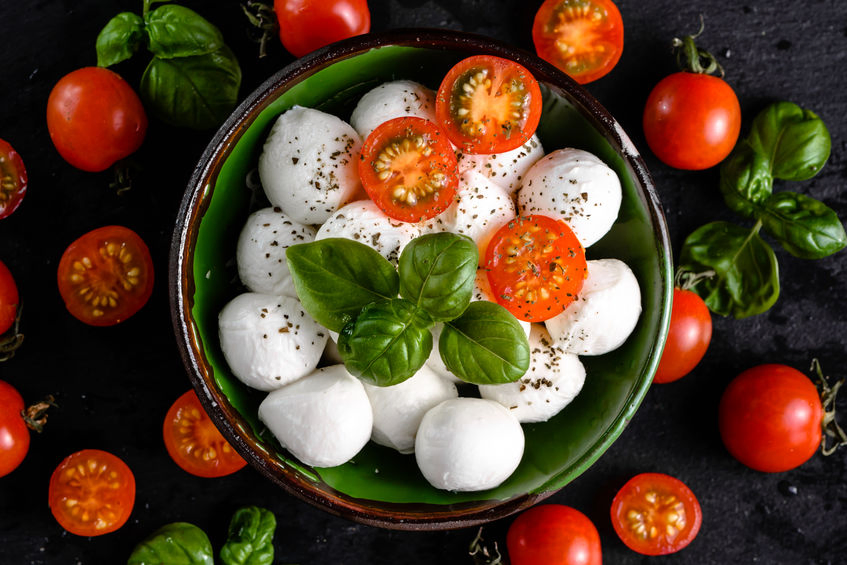
- Appearance: Bocconcini comes in small, round shapes, typically the size of cherry tomatoes. The cheese is white in color with a smooth and shiny surface.
- Texture: This cheese has a soft, semi-solid texture. When cut into, it reveals a fibrous and elastic interior. Fresh bocconcini often have a slightly spongy feel.
- Smell: Bocconcini has a very mild, fresh scent, similar to that of fresh milk or cream. It doesn’t have a strong or pungent odor, which is characteristic of many fresh cheeses.
- Taste: Bocconcini has a delicate, clean flavor. It is subtly sweet and tangy with a mild milky taste. The flavor isn’t overly strong or overwhelming, making it a versatile cheese that can complement many different dishes.
- Aftertaste: The finish is relatively short with lingering creamy notes. It leaves a clean, slightly sweet aftertaste.
- Mouthfeel: The cheese is moist and slightly creamy. It has a distinctive elasticity and stringiness when bitten into, which is a characteristic feature of pasta filata (stretched-curd) cheeses.
- Pairings: Bocconcini pairs well with light, crisp beverages like Sauvignon Blanc or Pinot Grigio. For food pairings, it goes well with fresh tomatoes, basil, olive oil, and crusty bread in a classic Caprese salad. It also works well in pasta dishes, pizzas, and antipasti platters.
Is Bocconcini a healthy cheese?
Yes, Bocconcini can be considered a healthy cheese, but like any food, it should be consumed in moderation as part of a balanced diet.
- Low in Fat and Calories: Compared to many other types of cheese, Bocconcini has a relatively low fat content. It also has fewer calories, with about 60 calories per ounce.
- Good Source of Protein: Bocconcini provides a good amount of protein, with about 5 grams per one-ounce ball.
- Rich in Vitamins and Minerals: It is relatively rich in vitamins and minerals including calcium and manganese, which are important for bone health.
- Low in Sodium: Unlike many cheeses, Bocconcini is relatively low in sodium, with about 20 mg per one-ounce ball.
However, it should be noted that while Bocconcini has these health benefits, it is not suitable for all diets. For example, due to its low-fat content, it may not be the best choice for those following a ketogenic diet.
Please consult a healthcare professional or a registered dietitian to understand how Bocconcini can fit into your individual dietary needs.
Also read: Savor the Flavor: 20 Cheeses with the Least Lactose
Bocconcini nutrition facts
| Nutrient | Amount |
|---|---|
| Calories | 60 – 122 kcal per serving (varies by brand and serving size) |
| Carbohydrates | 0 – 3g |
| Fat | 4 – 8.3g |
| Protein | 4 – 8g |
| Sodium | 20 – 54mg |
| Fiber | 0g |
| Saturated Fats | 13g |
| Sugars | 0g |
How to eat Bocconcini?
Bocconcini cheese is versatile and can be eaten in a variety of ways. Here are 5 suggestions:
- Salads: Bocconcini is a common ingredient in Caprese salad, which also includes tomatoes, fresh basil, olive oil, and balsamic vinegar. You can also add it to other salads for a creamy, mild flavor.
- Appetizers: Serve bocconcini on a cheese platter with olives, cured meats, and crusty bread. Or skewer them with cherry tomatoes and basil leaves for a quick and easy appetizer.
- Cooked Dishes: Add bocconcini to pasta dishes, pizzas, or baked vegetable dishes. The cheese will melt slightly, adding a creamy texture.
- Marinated: Marinate bocconcini in herbs and olive oil for a flavorful snack or appetizer.
- Straight Up: Bocconcini can also be enjoyed as is, perhaps with a sprinkle of salt and pepper.
Bocconcini is best served at room temperature, so take it out of the fridge about 20 minutes before you plan to eat it to allow it to warm up.
7 Best Bocconcini Substitutes
| Substitute | Why it Works |
|---|---|
| Mozzarella | Traditional mozzarella is the closest in taste and texture to bocconcini. It’s also made from buffalo or cow’s milk and has a similar mild and creamy flavor. |
| Fior di Latte | This is a variety of mozzarella made from cow’s milk. It’s less creamy than bocconcini but has a similar flavor and texture. |
| Burrata | This is a fresh Italian cheese made from mozzarella and cream. The outer shell is solid mozzarella while the inside contains stracciatella and cream, giving it an unusual, soft texture. It’s richer than bocconcini but can be used in similar ways. |
| Ricotta | Though the texture is different, ricotta has a mild, slightly sweet flavor that can work as a substitute in some dishes. It’s best used in cooked dishes rather than raw ones. |
| Queso Fresco | This fresh Mexican cheese has a mild flavor and a texture that’s firmer than bocconcini but still soft. It doesn’t melt well, so it’s best used in salads or other cold dishes. |
| Cottage Cheese | In a pinch, you can use cottage cheese. It’s much softer and has a different texture, but its mild flavor can work in some dishes. |
| Halloumi | Halloumi is a semi-hard, brined cheese from Cyprus. It’s much saltier and firmer than bocconcini, but it can be used as a substitute in cooked dishes. Unlike bocconcini, halloumi can be grilled or fried without melting. |
What goes well with Bocconcini? Pairing guide
Food that goes well with Bocconcini
| Category | Foods |
|---|---|
| Salads | Caprese Salad, Tomato & Basil Salad, Bocconcini Salad with Green Bell Pepper and Celery |
| Appetizers | Bocconcini Marinated in Garlic and Herbs, Tomato, Bocconcini & Basil Bruschetta, Marinated Mozzarella Balls |
| Main Dishes | Savoury Mediterranean Galette with Bocconcini Cheese, Roasted Capsicum, Baby Spinach and Bocconcini Stuffed Chicken, Pizza topped with Bocconcini, Italian Bruschetta with Bocconcini |
| Side Dishes | Garlic Bread, Stuffed Shells, Baked Ziti, Gluten Free Bread |
Beverage that goes well with Bocconcini
| Category | Beverages |
|---|---|
| Wine | Chardonnay, Sauvignon Blanc, Pinot Grigio |
| Beer | Pilsner, Light Lager, Wheat Beer |
| Non-Alcoholic | Sparkling Water, Lemonade, Iced Tea |
Also read: Best Wine and Cheese Pairings: The Ultimate Guide
The history and origin of Bocconcini
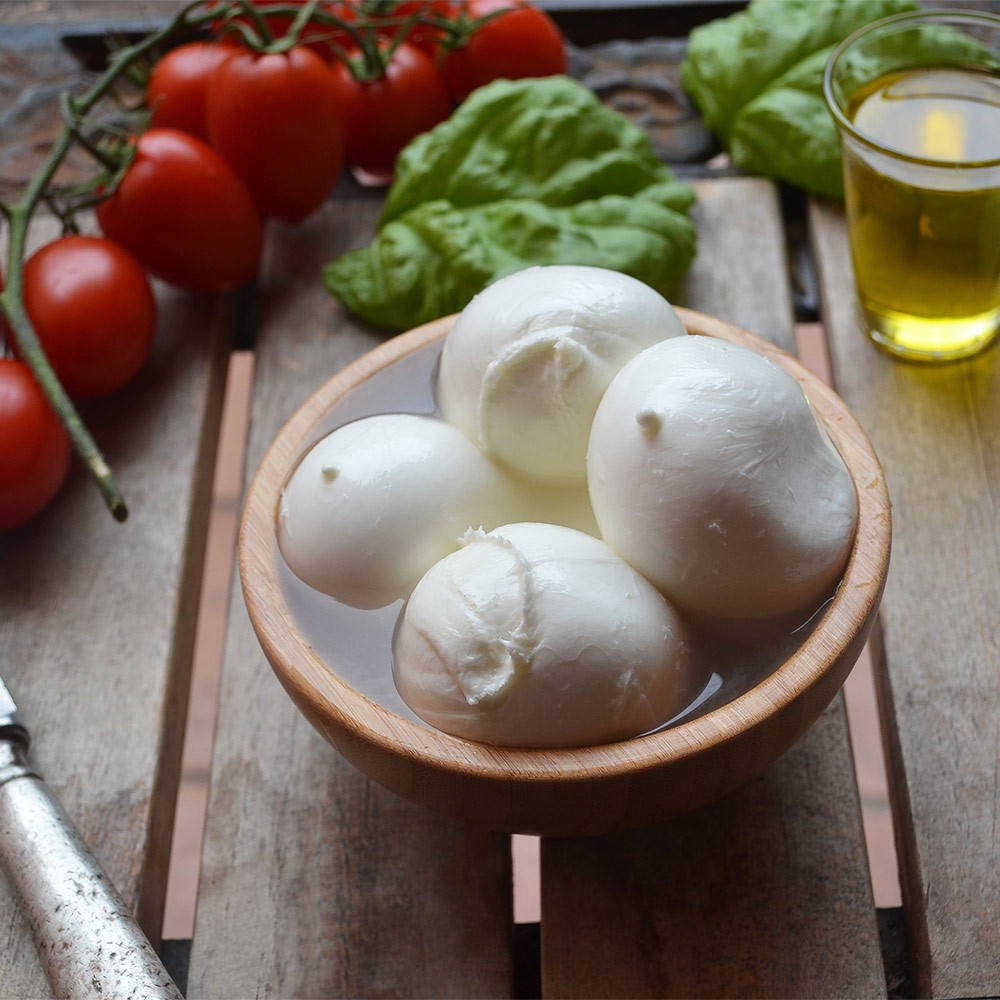
Bocconcini, which means “small mouthfuls” in Italian, is a type of pasta filata or stretched-curd cheese that originated in Naples, Italy. This cheese is traditionally made from water buffalo’s milk (Mozzarella di Bufala) around the Naples area.
The process of making bocconcini involves heating the curd to a point where it can be stretched and formed into various shapes, including small cherry-sized balls, hence the name “small mouthfuls”. This process gives the cheese its characteristic fibrous structure and elastic consistency.
The history of bocconcini is tied to the history of mozzarella as they are essentially the same cheese, just in different sizes. The production of mozzarella started in the Campania region of Italy many centuries ago, possibly as far back as the 12th century.
The use of buffalo milk for this cheese is also rooted in the history of the region. Water buffalos were brought to Italy in the 7th century and thrived in the marshy regions of Campania. The rich, creamy milk of these animals proved ideal for the production of mozzarella and bocconcini cheeses.
Today, while bocconcini is still produced in Italy, it’s also made globally and often uses cow’s milk instead of buffalo milk due to availability. Regardless of the type of milk used, the process remains largely the same, resulting in a mild, soft, and slightly sweet cheese enjoyed by many.
Frequently Asked Questions
1. Is Bocconcini a fresh cheese?
Yes, Bocconcini is a fresh cheese.
Since this cheese is perishable, it is best consumed fresh. These bite-sized balls of fresh mozzarella are moist and mild with a fresh milky flavor.
2. Can you eat Bocconcini raw?
Yes, Bocconcini can be eaten raw and is often enjoyed this way. It has a mild, creamy flavor that works well in salads, especially Caprese salads made with fresh tomatoes, basil, and a drizzle of olive oil.
It’s also delicious eaten on its own or with a bit of salt and pepper.
3. Is Bocconcini made from cow’s milk?
Yes, Bocconcini is typically made from cow’s milk. It’s a type of mozzarella cheese that was originally made from the milk of water buffaloes. However, outside of Italy, it’s often made using cow’s milk due to its availability and cost-effectiveness.
4. Is Bocconcini cheese high in cholesterol?
Bocconcini cheese is considered to have a relatively low cholesterol content compared to many other types of cheese.
While it does contain some cholesterol, it’s important to note that dietary cholesterol does not affect blood cholesterol levels as much as once thought. The bigger concern is often the saturated fat content in cheese, which can raise blood cholesterol levels. Bocconcini contains about 2.5g of saturated fat per serving (source: eatthismuch.com) and 3.5g of saturated fat per serving according to nutritionvalue.org.
However, as with any food, moderation is key. While Bocconcini is lower in cholesterol and saturated fat compared to some other cheeses, it should still be consumed in reasonable amounts as part of a balanced diet.
5. Can you freeze fresh Bocconcini?
Yes, you can freeze Bocconcini cheese, but it’s important to keep in mind that freezing may change its texture. Fresh Bocconcini has a soft, delicate texture that can become more grainy or crumbly after freezing and thawing. The taste should remain fairly consistent, but the texture change might make it less suitable for certain dishes where a fresh, smooth texture is desired.
To freeze Bocconcini, you can drain it from its brine, pat it dry, and place it in an airtight container or zip-top freezer bag. Try to remove as much air as possible to prevent freezer burn. When you’re ready to use it, thaw it in the refrigerator overnight.
Despite these considerations, frozen and thawed Bocconcini should still work well in cooked dishes like lasagna, pizza, or baked pasta, where the texture change won’t be as noticeable.
6. What is the liquid in Bocconcini?
The liquid in which Bocconcini and other fresh mozzarella cheeses are packaged is a saltwater solution known as brine. The brine serves a few purposes: it helps to preserve the cheese, keep it moist and soft, and enhance its flavor by adding some saltiness. The brine can also have a slight acidity depending on the cheese-making process, which can further help to preserve the cheese.
7. Is Bocconcini low in salt?
Bocconcini, like other types of fresh mozzarella cheese, is relatively low in sodium compared to many other cheeses. According to eatingwell.com, the sodium content in Bocconcini is approximately 85mg per ounce.
However, it’s important to remember that “low” is relative and can depend on your overall diet and health needs. If you’re on a low-sodium diet for health reasons, you should still be mindful of portion sizes when consuming cheese, including Bocconcini.
As always, if you have any health concerns, it’s best to consult with a healthcare professional or dietitian.
Also read:
- Discovering Panela: A Guide to Mexico’s Versatile Cheese
- All About Swiss Cheese: A Comprehensive Guide
- The Tale of Taleggio: Unveiling Italy’s Pungent Treasure
- Cotswold Cheese: A Taste of England’s Finest
- The Ultimate Guide to Hoop Cheese: A Southern Delight
- The Ultimate Guide to Chèvre: Exploring Goat Cheese
- The Ultimate Guide to Kasseri: A Taste of Tradition

